1. Empire and the “Traditional” Paul
The notion of “empire” regularly pops up in discussions both in the church and in academic theology. One the one hand, there is the constant consideration of how Christianity relates to present-day power structures, the state, or individual politicians. On the other hand, this conversation often includes reference to biblical literature – and thus raises the historical question of how specific authors of the Old and New Testament relate to the empires of their day. (Cf., for example, this volume). The apostle Paul seems, at least at first sight, not to offer a particularly critical perspective on the Roman Empire of his own days: only a few years before Christians were burnt alive as torches by Nero in Rome, his advice to the congregations in that city (Rom 13:1–7) seem to be marked by submissiveness and even theologically motivated respect!
And in a certain sense, so earlier generations of scholars, this attitude was also quite understandable. As a Roman citizen (if he was one), Paul knew the benefits of Roman rule from his own experience. And if there hadn’t been a Roman peace, the famous pax Romana, and if the Romans hadn’t invested so much in the infrastructure of the huge area over which they ruled – how would evangelism even have been possible for the travelling apostle? So, at first sight, Paul and his writings do not seem to be an especially promising source for “anti-imperial” notions. Rather, he seems to be a forerunner for the church father Eusebius, where such a positive stance towards the Empire climaxes in it being regarded as an instrument of God that prepared the way for the gospel.
2. Coded Criticism?
This picture, however, has been questioned by some scholars over the last two or three decades: What if, so they ask, on the basis of these explicit statements in a single passage we have misread Paul through the centuries by ignoring the fact that there are, in fact, plenty of implicit critical remarks directed against the Roman Empire and, specifically, against the figure in which it was focused, Caesar? After all, so this line of thought, Paul couldn’t have been pleased with the imperial cults that sprang up in virtually all the cities Paul visited during his missionary travels after Octavian had been named “son of a god” in light of the the deification of his adoptive father (and great uncle) Gaius Julius Caesar.
Two scholars in particular, Neil Elliott and N. T. Wright, have propagated this new idea in multiple publications, building on two basic assumptions:
- It would have been dangerous to criticize the Roman emperor publicly.
- Paul wanted to avoid persecution and, thus, needed a way to state his criticism while remaining safe.
Thus, so the conclusion, Paul expressed his criticism only “between the lines.”
If Paul’s criticism, his real intention, is however located not on the surface of the text, but rather in its subtext, how could we dig it up? After all, it seems to be the nature of something that is “hidden” that it can’t be seen. Hence, we are faced with the question of how we could possible decrypt this “coded” criticism and how we could unveil what is covered over by centuries of misled interpretation? Both Elliott and Wright make recourse to a list of seven criteria that had been suggested by the Pauline scholar Richard B. Hays for the detection of subtle allusions – so-called “echoes” – of the Old Testament in the letters of Paul.
These criteria are (cf. Hays’s book Echoes of Scripture in the Letters of Paul, pp. 29–30):
- Availability: Was the supposed source of the echo available to the author/the original reader? The Hebrew Scriptures are assumed to be known to Paul on the grounds of many explicit quotes. On the other hand, this shows that Paul expects his readers to be familiar with this material.
- Volume: The “volume” is mainly determined by the degree of explicit repetition of words or syntactic patterns. But there are other factors, such as the question of how important the source text was in the Jewish canon and how much the echo is emphasized.
- Recurrence: How often does Paul quote the same scriptural passage or allude to it.
- Thematic Coherence: This criterion analyses how well the supposed echo fits into the flow of Paul’s argument or with other quotes in his letters.
- Historical Plausibility: Is it historically plausible that Paul would have intended the effect of the echo and that his readers could have understood it?
- History of Interpretation: Has the echo been identified before? Since discoveries could be new and meanings lost for a long time, a negative test result is not a criterion for exclusion.
- Satisfaction: This criterion asks questions like: Does the new reading make sense? Does it shed light on the discourse? Does it offer a good explanation for the supposed intertextual link?
If it is possible to identify echoes of Scripture in Paul’s writings with this method, why not – so the two scholars – also echoes of the Roman ideology?
3. Criticism of the Idea of Hidden Criticism
While this line of argument won the support of a substantial number of scholars, many (see, e.g., Seyoon Kim on “Christ and Caesar”) have remained skeptical about whether this was a feasible exegetical procedure, questioning whether we might not rather read an anti-imperial attitude into the text in an uncontrolled manner. Most notably, John M. G. Barclay put forward this critique in a prominent debate with Wright at a SBL meeting (you can listen to the audio here and here ). Barclay later published his remarks in revised form in his collection of essays Pauline Churches and Diaspora Jews (Eerdmans has published a inexpensive reprint of the original Mohr Siebeck edition, which can be bought here). As he puts it in the title of that chapter, in his opinion the Roman Empire was simply “insignificant” for the apostle – and the fact that we don’t find explicit criticism in his letters is simply due to the fact that Paul didn’t even deem the Empire worthy of any special attention (both positive and negative), focusing rather on the real enemy, i.e., Sin and Death.
4. Assessing the Current Methodology
4.1. What Makes a Hypothesis Plausible?
How could this dispute be decided? First, one could evaluate the question of whether Hays’s seven criteria are actually fulfilled in the case of “echoes of the Empire.” Second, it would also be possible to focus, more fundamentally, on the question of whether this set of criteria is even applicable to the realm of Roman ideology. This route is taken by Barclay. Both of these approaches to checking the validity of the paradigm by Elliott and Wright presuppose, to be sure, that Hays’s criteria are in fact a good set of tests for the context they were originally designed for. But is this assumption justified or do we need to build on a different methodological foundation?
If we encounter a peculiar formulation in one of Paul’s letters and we argue about whether it is due to an intertextual link (be it to Roman ideology or Scripture), we are proposing a hypothesis and making a claim that it is better supported by the evidence than its alternatives (e.g., chance). But what is it that makes a hypothesis “better” in the first place?
There is a very intuitive answer to this question. From a good hypothesis we demand, first, that it explains the evidence in question well. In other words, the hypothesis has to have a good “predictive power,” an aspect that we can estimate by answering the question: If the scenario involved in the hypothesis were true, would we actually expect the phenomenon that we are now trying to explain (i.e., the specific phrase)? If I notice that my car has a flat tire, I will search for explanations that would make the damage understandable. There are scenarios that might be very plausible in themselves – e.g., that I ran over a snail (I might still see the crushed shell sticking to the tread) – but which do not seem to be a likely cause for the damage I observe.
However, this aspect of predictive power alone cannot suffice as a criterion. For we all know that it is easy to come up with a multitude of explanations for any circumstance that would make the occurrence of the observed event (a flat tire, a wet road, a specific formulation in the text, etc.) appear probable – but which are incredible to us because they presuppose certain assumptions that we are not willing to share, such as the idea that an alien visited our planet in order to destroy my tire with a laser sword. After all, you might already have noticed, that it is a hallmark of conspiracy theories that they beautifully explain all kinds of observations – but they do so at the cost of making assumptions that many of us judge to be improbable (that the US government would be willing to kill the people in the World Trade Center, for example).
4.2 Introducing Bayes’s Theorem
Thus, the second aspect we have to take into account when we evaluate competing hypotheses is the question of whether the parameters they presuppose are plausible in light of our background knowledge. Even if my damaged tire looks perfectly like what one would expect as the result of a stabbing mixture of E.T. and Darth Vader, I might still reject this explanation on the basis that I am not convinced that a potential perpetrator of that kind even exists.
You might ask, quite appropriately, how these considerations concerning a hypothetical alien might relate to Hays and his criteria. A first step towards an appropriate answer is that a notable feature of the comparison of different hypotheses is that it often takes place in probabilistic terms. In other words, usually we regard a hypothesis to be superior over its alternatives if it is more “probable” in our eyes. By this we commonly mean that we would be willing to bet (varying amounts of) money on its truth. From this circumstance we can move on and observe that there is a relatively simple mathematical theorem (by the mathematician Thomas Bayes; note that the authenticity of the picture is debated) that describes how conditional probability is to be calculated.
This, in turn, can be applied also to the calculation of probabilities of different hypotheses in light of (i.e., being probabilistically dependent on) new evidence – and this is of course of enormous importance for the evaluation of Hays’s criteria!
4.3 Bayes’s Theorem and Biblical Exegesis
To be sure, when dealing with historical matters, we usually don’t have precise numbers with which we could feed Bayes’s theorem. However, what is helpful about it indeed is that it shows us exactly how these two aspects – I call them “explanatory potential” and “background plausibility” – are related to each other. In particular, it is clear because of the theorem that both aspects need to receive equal weight when we assess the validity of explanations for a specific phenomenon.
It is immediately obvious why this is important for the exegesis of biblical texts: For a complete argument, it does not suffice, on the one hand, to find an explanation for a peculiar phrase that would make it very probable if it were true. Together with Theresa Heilig, I have argued elsewhere that this is a potential danger of proposals that rely on “abduction.” For example, it stands to reason to assume that if Paul’s thinking was shaped by a complex multi-layered narrative on the level of his worldview, this might explain many of the features of his text. However, we also have to critically assess the question of whether it is even plausible to assume that this mental construct ever existed.
On the other hand, falling off at the other side of the horse, biblical scholars often make the reverse mistake of discovering a new “background” for a specific wording and then spend a great deal of energy demonstrating that this context was actually available to Paul (i.e., the hypothesis has a good background plausibility), while failing to show that Paul’s actual word choice is what we would expect if he had had indeed this context in mind. To give just one example, some scholars have suggested that when Paul uses the verb θριαμβεύειν in 2 Cor 2:14, he doesn’t think of the Roman triumphal procession but of a pagan epiphany procession. Now, Paul certainly knew about these kinds of celebrations. However, what one must not overlook is the fact that there were plenty of lexical options at his disposal for expressing precisely that notion – and θριαμβεύειν was not one of them! For details on this, see the work discussed in this post. Interestingly, a statistician who has reviewed this work confirms that in his experience, “explanatory potential is often neglected in exegetical studies relative to background plausibility.”
4.4 Analyzing Hays’s Criteria against the Backdrop of Bayes’s Theorem
Now, just as Bayes’s theorem offers a framework for evaluating specific exegetical proposals, it can also offer us a “meta-criterion” for assessing suggested sets of criteria for the identification of certain features. A set of “criteria” – in the sense of a heuristic tool – is good if it is a fair projection of the equal consideration of both explanatory potential and background plausibility. So, what happens if we analyse Hays’s criteria against the background of these two parameters? The result looks, I would suggest, like this:
- Background Plausibility
- “Availability” of the source text for the author (including parts of “History of Interpretation”)
- “Historical Plausibility” of the achieved effect in the framework of the worldview of author and recipient (including parts of “History of Interpretation”)
- “Thematic Coherence” with the immediate literary context
- “Thematic Coherence” with other allusions by Paul and “Recurrence” of the motif
- Explanatory Potential = “Satisfaction” (including “Volume” of the potential echo)
That this is not unproblematic should be immediately obvious:
First, based on a list of seven criteria, one would probably not think that one of them – “satisfaction” – should actually bear half the weight of our entire assessment. Thus, there is a real danger that anyone who uses this set of criteria will underemphasize certain aspects. There is an associated problem: Hays’s approach is cumulative. So the failure of one test might be balanced out by the fulfilment of other criteria. There is good reason for such an approach, because for Hays the criteria function as heuristic tools, not as all-or-nothing touchstones. However, there is no control mechanism built into the set itself to prevent illegitimate compensation. If “satisfaction” falls through completely, for example, how many of the other criteria do you think have to be fulfilled? 2, 4, or perhaps 6? The answer is: it doesn’t matter. If the explanatory potential is zero, so is the overall-probability.
Second, rather than being independent, some of Hays’s criteria seem to be subordinate to one or several of his other criteria. For example, whether the assumption of an intertextual echo explains the text in question well (i.e., whether we would expect that wording if the hypothesis were true) depends, after all, on the “volume.” Accordingly, if we are dealing, e.g., with a long string of words, this lowers the explanatory potential of competing hypotheses such as chance. So there is also the danger associated with this set of criteria that we might make an argument on the basis of the quantity of fulfilled criteria even though this number is actually the result of an inflation of only a single criterion, thus leading to on overemphasis on certain aspects.
Third, it seems doubtful whether these criteria actually cover all the relevant evidence. In other words, what tells us that all the important parameters that make up the background plausibility of a hypothesis are taken into account once we have taken into account Hays’s criteria (with the exception of “satisfaction”)? Part of the problem is, that the criteria in themselves do not specify which specific data need to be considered to perform the individual tests. For example, what makes the hypothesis of “hidden criticism” of the Roman Empire historically plausible? The criterion itself does not tell us in any detail. Thus, I think the third danger with using Hays’s criteria (regardless of the source in question for the postulated intertextual link) is that it is rather easy to claim that a specific area of evidence is covered (most notably “historical plausibility” and “availability”) because we can point to some data in our background knowledge that would support the assumption of such an intertextual reference, even though other evidence might contradict this. Let’s take as an example the thesis that Paul’s use of the “son of God” title for Jesus is a challenge to the Roman emperor. Now, the fact that the inscription divi filius occurs on coinage certainly belongs to the area of “availability” – but does the fact that we have considered some evidence that is relevant to this test also imply that this box can be regarded as ticked?
To be sure, you can use Hays’s criteria in a heuristically fruitful way – namely if you intuitively attribute, first, the right portion of significance to the individual criteria and if you, secondly, make sure that you do not use the label of a criterion as an excuse for not making your own reflection on what kind of evidence needs to be taken into account to evaluate it. The problem, of course, is that it is well known from psychological experiments that our intuition does not serve us particularly well in such matters… It is of course possible to cultivate this intuition and there are, thus, certainly many sober judgements that are made on the basis of Hays’s criteria, especially by Hays himself. However, from a methodological perspective their function can then best be described as “inspirational” (i.e., stimulating the exegete to take certain important aspects into account), while the correct result of the inference is due to the independent attribution of the appropriate evidence to the individual criteria and to the right attribution of significance to them. In light of the problems mentioned above – which become obvious when the set of criteria is analysed against the background of Bayes’s theorem – it could be said that the inference would then be correct despite – and not because – of Hays’s criteria, which have at least the potential to mislead.
But is there a better way forward?
5. An Alternative Methodological Approach
Let’s try to figure out an alternative approach that does not rely on Hays’s criteria but rather uses the basic structure of Bayes’s theorem as its point of departure.
The explanatory potential of the “echo-hypothesis” has, of course, to be evaluated on a case-by-case basis. The question of whether the assumption of a subtle intertextual reference explains a specific phrase needs, after all, to take into account this specific wording. For example, we could investigate which Greek lexemes we would expect if Paul wanted to allude to the Roman slogan pax et securitas (“peace and security”) – and whether the answer corresponds to his actual word choice in 1 Thes 5:3 (εἰρήνη καὶ ἀσφάλεια).
But even if both questions were given an affirmative answer, we would still be faced with the question of whether the background plausibility of this hypothesis would be high enough. If we read the work of those who criticize Elliott’s and Wright’s paradigm against the backdrop of our previous considerations, it becomes clear that these scholars actually claim that in light of our knowledge of antiquity, the background plausibility of the “echo-hypothesis” ultimately breaks down. If, however, the background plausibility of the hypothesis that Paul used the subtext of his letters to implicitly criticize the Roman Empire is negligible, even an explanatory advantage, be it small or large, wouldn’t really help the case of Elliott and Wright!
But how can we distinguish insignificant quibbles from paradigm-shaking objections? As we have already seen, reference to the (lack of) fulfilment of Hays’s criteria is only of limited value. Therefore, I suggest a somewhat different route: Let’s think again about the basic assumptions that the echo-hypothesis of Elliott and Wright makes: 1. It would have been dangerous to criticize the Roman emperor publicly. 2. Paul wanted to avoid this persecution. My suggestion is that it is possible to identify several “necessary conditions” that are connected with these two basic assumptions:
- Most fundamentally, this hypothesis presupposes that Paul’s letters were actually a matter of public discourse. (This is where the issue of “hidden” and “public transcripts” is relevant.)
- It is also presupposed that the rules of this public discourse, in the Roman Empire, sanctioned open criticism of certain aspects of its ideology.
- Moreover, it is a necessary condition that Paul knew that ideology.
- And, of course, this knowledge can only lead to criticism if he had a critical attitude towards it.
- Lastly, the actual expression of such an attitude in the subtext of Paul’s letters presupposed that the move to cover his critical remarks would fit the personality of the apostle.
As you might have noticed, these necessary conditions are successively built on one another. Thus, if the first assumption can be disproven, we don’t have – and should not – point to the fulfillment of subsequent conditions, because the background plausibility as a whole collapses. To me this seems to be a clear advantage of this approach – it offers a framework for academic discourse by allowing different scholars to precisely locate their disagreement with Elliott and Wright (assuming that they have good reason to disagree). Similarly, one could also criticize my own attempt to structure the debate by pointing to an additional consideration that ought to be located as “missing-link” between two of my suggested conditions.
If I have managed to provide a convincing argument to this point, then you might perhaps appreciate this potential contribution to the continuing dialogue concerning the question of the anti-imperial Paul. However, perhaps you might also be deeply interested in the question of what an assessment of this bottom-up set of necessary conditions of the echo-hypothesis would actually look like and to what result it might point: Is the Roman Empire really insignificant to Paul? Does the paradigm of a counter-imperial interpretation of Paul, as developed by Elliott and Wright, collapse if scrutinized through the lens one of the above mentioned considerations?
One way to satisfy your curiosity would be to buy this book, whicht has just been released by Fortress and which is currently on offer:
If this blog post hasn’t convinced you, perhaps these endorsements will:
If you (or your library) have a bit more money to spend and you wish to prioritize printing and paper quality, you might also consider getting the version that was published by Mohr Siebeck.
Christoph Heilig is the author of Hidden Criticism? Methodology and Plausibility of the Search for a Counter-Imperial Subtext in Paul, (Mohr Siebeck, 2015) and Paul’s Triumph: Reassessing 2 Corinthians 2:14 in Its Literary and Historical Context, (Peeters, 2017). Additionally, he has co-translated (with Wayne Coppins, the main translator and editor of the project) Michael Wolter’s The Gospel According to Luke and co-edited (with J. Thomas Hewitt and Michael F. Bird) God and the Faithfulness of Paul: A Critical Examination of the Pauline Theology of N. T. Wright (Mohr Siebeck, 2016).

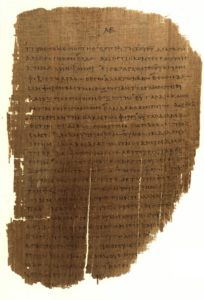

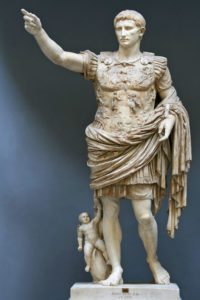
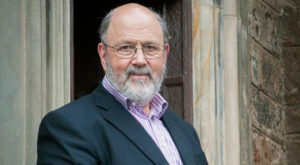
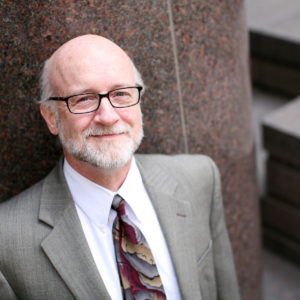
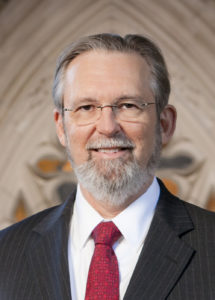

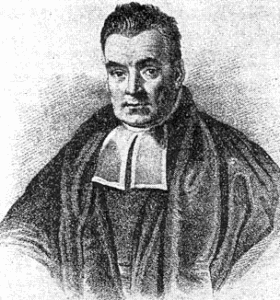
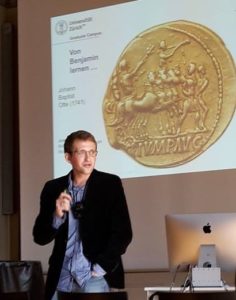
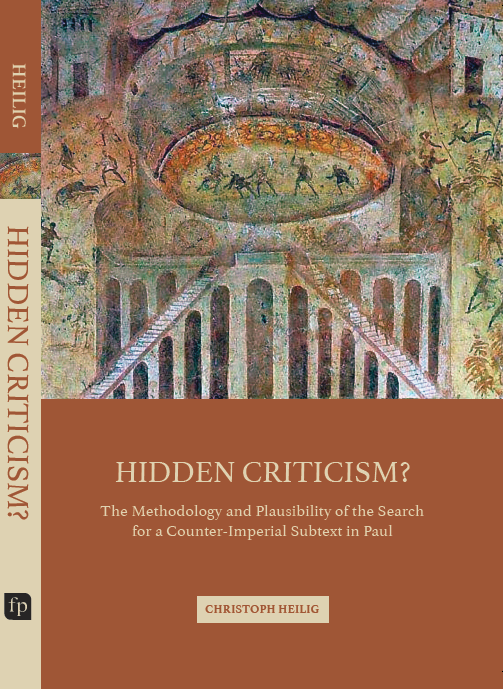

6 Kommentare vorhanden
1 Anti-imperial Paul? | Larry Hurtado's Blog // Sep 13, 2017 at 16:54
[…] For an overview of his own approach and assessment of the matter, have a look at his recent blog-post here. […]
2 Subtextual “empire” in Paul? | Subjects of the Kingdom // Sep 26, 2017 at 21:58
[…] through a consequential article about hidden Empire subtext in Pauline letters. (Find the article here. The article correlates to the contents of the same author’s […]
3 On Mastering Koine Greek // Mar 9, 2018 at 15:14
[…] Heilig is the author of Hidden Criticism? (Fortress, 2017) and Paul’s Triumph (Peeters, 2017). Additionally, he has co-edited (with J. […]
4 On Would and Wouldn’t: A Text-Linguistic Perspective // Jul 20, 2018 at 13:47
[…] recently. The memories are still painful. It’s the nightmare of any scholar. After having read my Hidden Criticism?, Larry Hurtado wrote me a very kind email – with one devastating observation. He pointed out that […]
5 Observations from a Linguistic Spectator: An Annual Report // Apr 19, 2020 at 0:02
[…] Heilig – currently postdoc in Basel – is the author of Hidden Criticism? (Fortress, 2017) and Paul’s Triumph (Peeters, 2017). This research has recently received the […]
6 Lexical Semantics and Lexicography // May 2, 2020 at 23:17
[…] Heilig – currently postdoc in Basel – is the author of Hidden Criticism? (Fortress, 2017) and Paul’s Triumph (Peeters, 2017). This research has recently received the […]
Kommentar schreiben